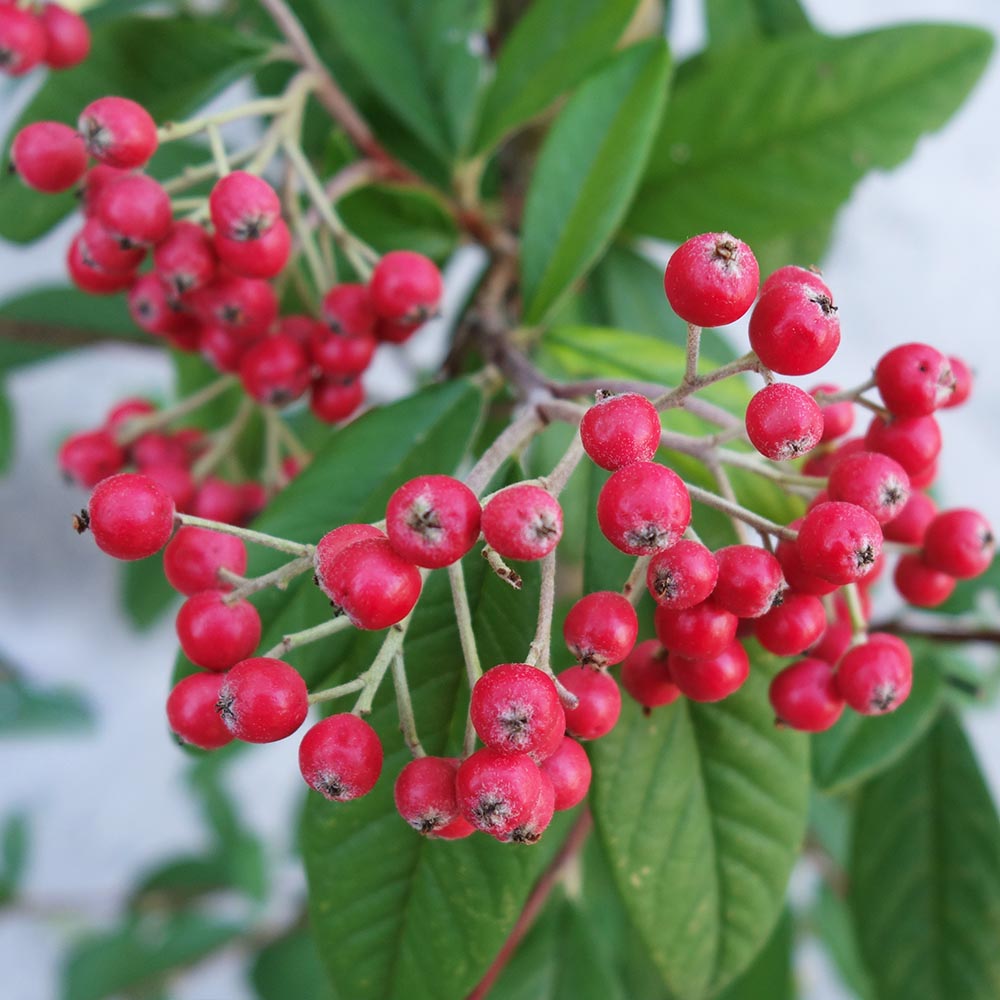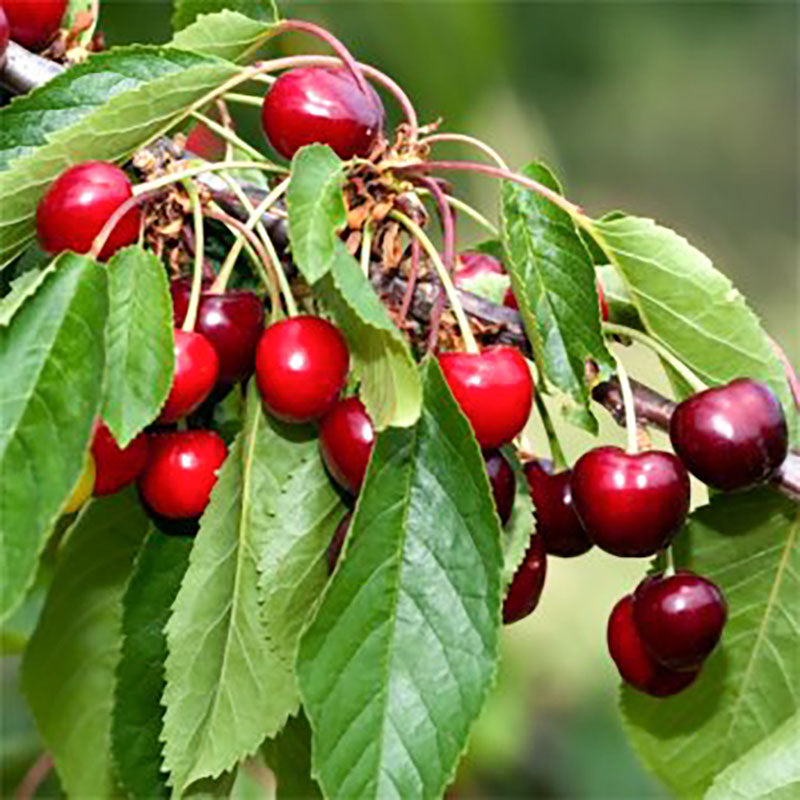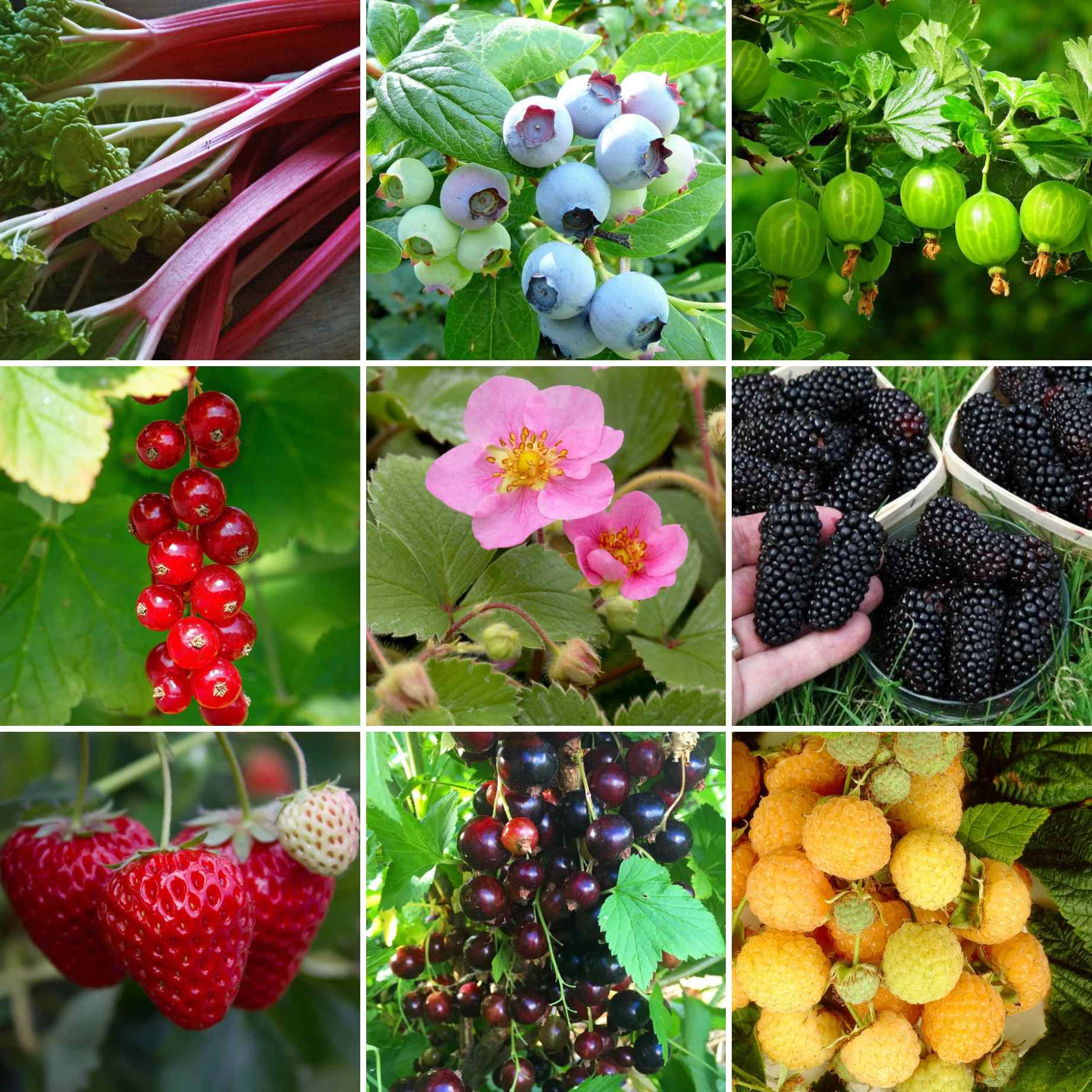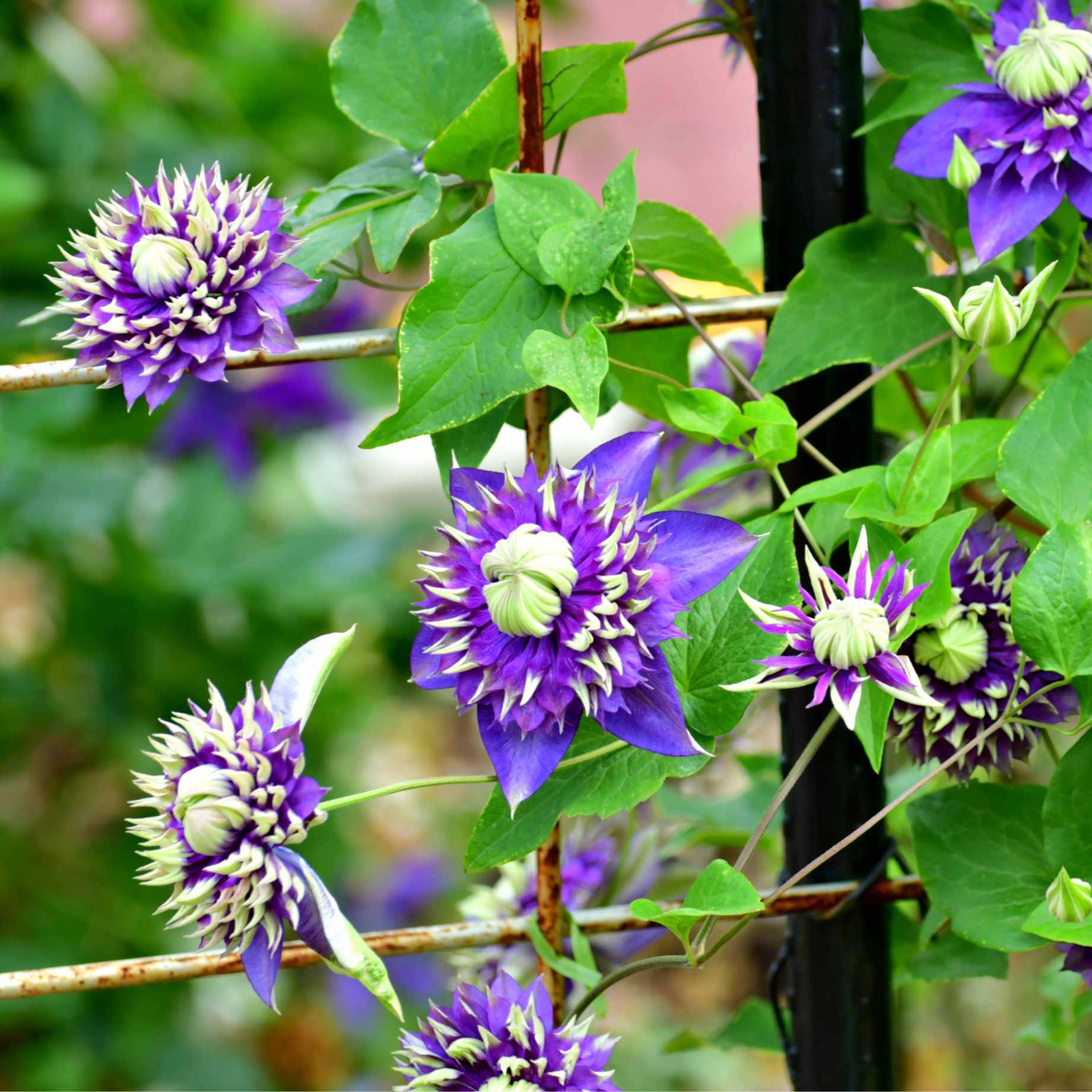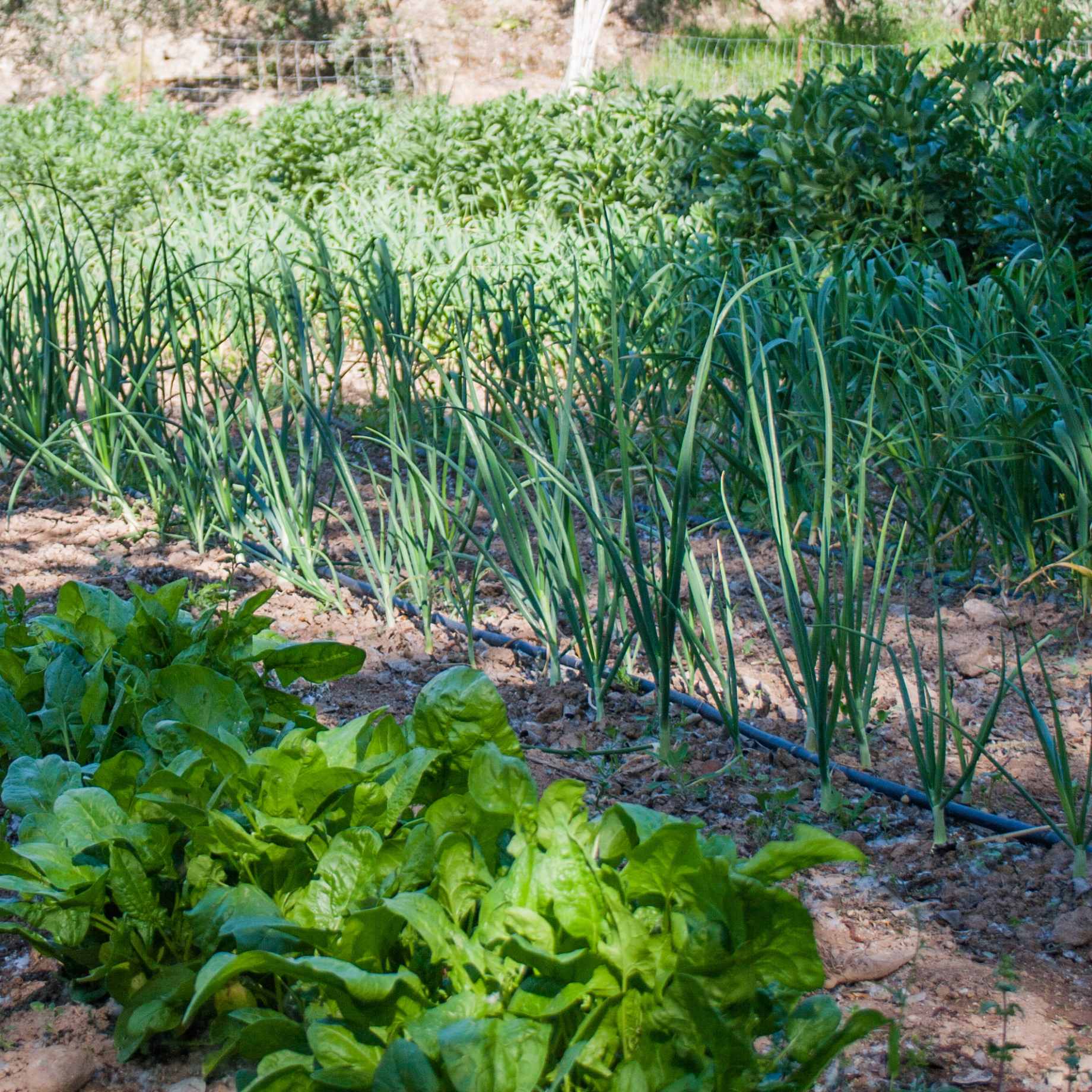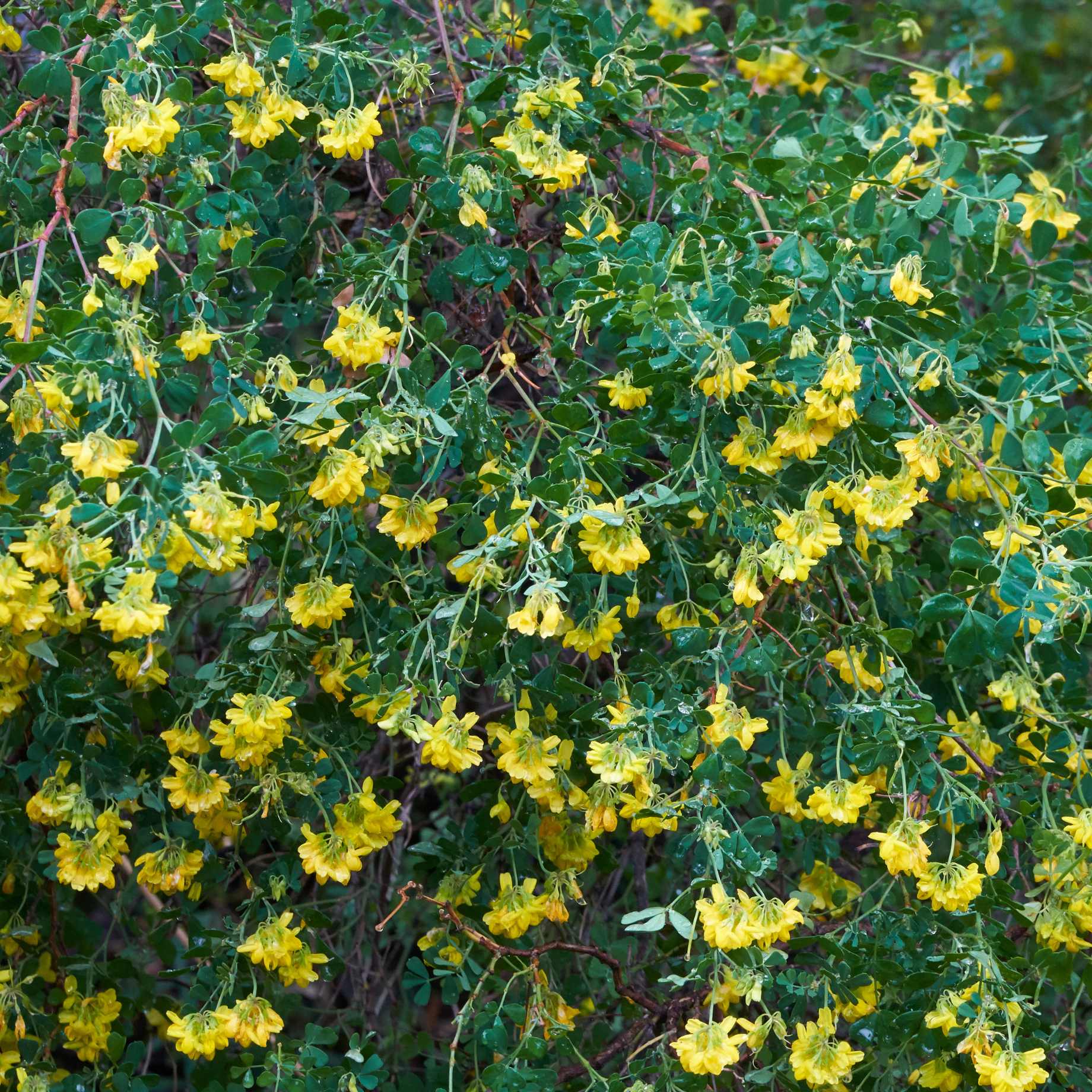Key features
AwardsRHS Award of Garden Merit
Final size6 x 4 metres in 20 years
FoliageGreen leaves year-round (evergreen)
FlowersWhite flowers in summer
FruitOrnamental red berries enjoyed by birds
SoilPrefers well-draining soil
Description
Cotoneaster frigidus ‘Cornubia’ is a lovely arching, semi-evergreen tree with long, pointed leaves glazed with a good mid/dark green colour. In June-July, masses of fluffy, white corymbs of flowers appear that are extremely attractive to bees and insects due to their strong, floral scent. In the autumn, a huge crop of eye-catching, red berries develop, creating a lovely, long-lasting display.
Forming a tree with a height and spread of around 6 x 4 metres in 20 years, ‘Cornubia’ has received the RHS Award of Garden Merit and makes a wonderful addition to any garden. Being semi-evergreen means that only the very harshest of winters will cause this Cotoneaster variety to lose its foliage cover. It will tolerate most conditions including exposed and coastal positions, as long as there is well-drained soil and sun or semi-shade.
AKA Tree Cotoneaster, Cotoneaster ‘Cornubia’
Planting Steps
1Preparation
- Pot-grown plants can be planted at any time of year, whereas bare roots need to be planted between November and March.
- Clear weeds and grass within a metre of the planting hole.
- Dig a hole as deep as the root mass and twice as wide.
- To help your plant establish more effectively, sprinkle Rootgrow in the hole.
2Planting
- Gently loosen the roots and place into the planting hole.
- Ensure the top of the plant’s compost is flush with the level of the surrounding soil and the graft union or collar of the tree is above ground level.
- Mix 50% of the original soil with 50% compost.
- Fill in the hole, firming the soil gently.
3Last Steps
- Water generously around the base of the plant.
- If you are planting either a single stem tree or mature standard tree, we recommend adding a staking kit and rabbit guard.
Aftercare Advice
Trees and shrubs require a good watering regime for a couple of years whilst they establish. Water well and regularly through spring and summer, increasing in hot or dry weather. If planting in autumn, you may only need to water a little. It is advisable to keep the area free of competing weeds and grass during this period.
For more detailed advice and video guides, please visit our Help & Advice section.

